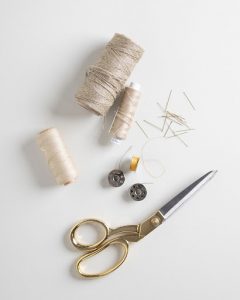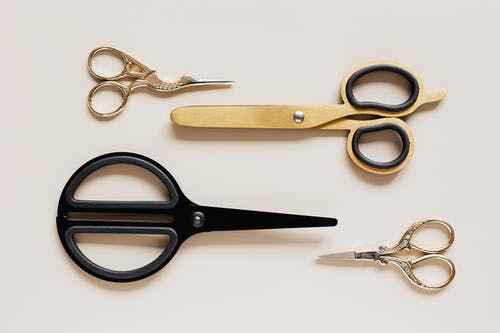Contents
Reading a sewing pattern – where to begin?
The best practice is to start by reading the instructions. Whether you’re using a booklet version or a downloaded file of the sewing patterns, this section will give you recommendations on the best type of fabric for this particular sewing pattern, as well as cutting instructions, tips on how much fabric you will need, what’s the thread yardage requirement, additional accessories you might need for your project and more.
Sewing level
Each pattern piece should give you information on the recommended skill level for the particular project. Based on that your pattern sheet will also differ slightly as it will have more instructions for the beginner level as compared to its advanced version. If you are at the beginning of your sewing adventure, it’s best to start with projects designed for beginners, and then as you learn more and more on the way you can choose more advanced sewing patterns.
Fabrics
The right choice of fabric is a very important element in the process of sewing. Not all fabrics are suitable for each type of garment and to ensure the best outcome of your finished piece it’s best to follow the recommendations included at the back of the pattern envelope. With time, while you learn more and more about fabrics, you may wish to experiment a little and use fabrics of your own choice.
Apart from that, you should also find information on the amount of fabric necessary for your project. It’s always a good practice to buy about 10% more than recommended. This way your garment will always look great even if the fabric shrinks with time.
Notions
This part is very important and you should always check it before starting the project. Here you will learn what exactly you will need to complete the garment. Items such as zips, buttons, bias tape, etc. Remember to check this section firsthand and make sure you give yourself enough time before starting sewing, in order to buy all the necessary accessories.

Body measurements
Getting the right body measurements will ensure the best outcome of your project. You should not rely on your usual size which you choose while shopping for clothes. Each designer has its own size chart and it’s very likely that the sizes will differ. We generally take 5 basic measurements: height, bust, chest, waist, and hips, and since it’s very likely that you will be a combination of sizes, here’s a small tip on what best to choose:
- choose your natural waist measurement for skirts,
- choose your hip measurement for shorts and trousers,
- choose your bust measurements for shirts, tops, and jackets.
Tip! Don’t take your measurements once and use them for all your future projects. Re-measure yourself regularly as unfortunately, our body doesn’t usually stay the same.
Finished garment measurements
The information on the pattern piece also includes the finished garment measurements. These will generally show how much ease is required for the garment you are sewing, including garment ease and wearing ease. The first one says how much room it is available to move around when the garment is sewn, and the second one gives the minimum ease we can choose and still feel comfortable when wearing the ready-made piece of clothing.
Tip! Always use the correct seam allowance and don’t cut out the corners of the fabric.
How to read the markings on the pattern pieces?
When you look at the sewing pattern, you’ll notice that the sheet is filled with line drawings and symbols. This characteristic sewing language will tell you things like how to place your sewing pattern on the top of your fabric, how to fold the fabric in order to cut it, what’s the grainline and hem allowance, where to place buttons, etc. The most common symbols on sewing patterns are:
Grainline – suggested direction in which to place the sewing pattern on the fabric.
Place of fold – where to place the pattern on the fold of the fabric so that you can cut two identical halves as one.
Notches – little triangular marks which indicate where to match up the pattern pieces.
Buttons and buttonholes – show where to place a button and what length should a buttonhole have.
Dots, squares, and shapes – dots indicate where to match up with an equivalent dot on another pattern piece. Other dots may indicate how to create a pocket or wear a collar or lapel edge should appear. Other shapes are used alternatively when other markings have already been used.
Lengthen or shorten – shows where you can add or take away some length.
Stitching line – shows where the fabric pieces should be stitched together.
Darts – those show tapered folds which allow for adjustment of the garment so that it fits the body contours perfectly.
Sewing is an amazing skill allowing for lots of freedom and creativity. Once you learn how to read the sewing patterns, you will see endless possibilities to design clothes of your own choice and express your individual style.

